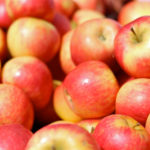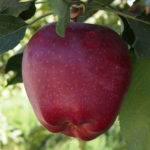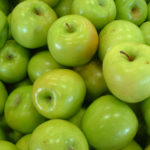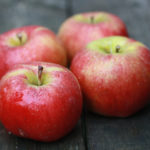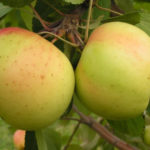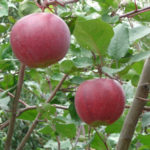Syabryn apple variety
As you know, apples are the most suitable fruit for storage. In order not to be left without a vitamin reserve in winter, a winter variety must necessarily grow in the garden. And breeders offer a lot of these, for every taste and color. Many gardeners consider the Belarusian Syabryna to be one of the best late species. The name translates as "girlfriend". This apple tree was bred in the early eighties of the last century. Its author G.K. Kovalenko received a novelty by hybridizing the Lobo and Prima varieties. But the unitary enterprise "Institute of Fruit Growing" filed an application for registration of the variety in the State Register of Breeding Achievements of Russia RNPD in 2006. In 2013, Syabryna was registered and received permission to grow in the Central region of Russia (Moscow, Bryansk, Tula, Ivanovskaya, Ryazan, Vladimir, Smolensk, Kaluga regions).
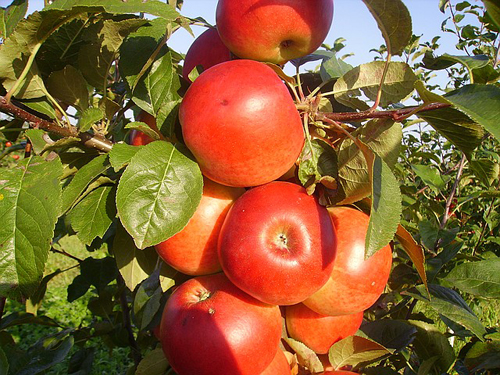
Description
The tree is medium in size, covered with a not too thick, rounded crown. The compact arrangement of the branches gives the apple tree a neat look. The branches extend from the trunk at an angle close to a straight line, the tops are directed upward. Annual shoots are not too thick, rounded, covered with dark red bark, slightly pubescent. The bark of the trunk and main branches is scaly. Fruiting mainly occurs on ringlets, with a high density of distribution of the crop. Syabryna is capable of laying generative buds on annual shoots. The leaves are large, dark green, with a smooth surface, elongated. The edges of the leaf plate are raised up, and the apex is short-pointed, bent downward. The petiole is ordinary, colored. Stipules are elongated. The flowers of the apple tree are white, with a slight pink tint.
The appearance of the fruits of this variety is attractive. The skin is firm, covered with a wax coating. At the moment of ripening, the fruit turns light yellow; on most of the surface, a cover color appears - blurry, crimson. At the stage of consumer maturity, the main color changes to whitish, the integumentary color is blurred, crimson, more pronounced on most of the surface. The subcutaneous points are small, gray, well visible, often located. The funnel is deep, sharp-conical in shape, there are no signs of rusting. The saucer is medium, narrow, ribbed and bumpy. The pulp is of medium density, prickly, fine-grained in consistency, tender and juicy. The aroma is moderately pronounced. The color is white-greenish. The taste is sour-sweet, but at the moment of consumer ripeness, sweetness becomes the predominant note. Assessment of tasters - 4.5 points. 100 grams of raw matter contains: 12.2% dry matter, 9.3% sugar, 0.46% titratable acids, 0.8% pectin substances, 2.1 mg vitamin C. Fruits are large, medium one-dimensional, rounded, slightly ribbed. Average weight 127.3 grams.

Characteristics
- Syabryna is very fast-growing, the apple tree begins to bear fruit already 2 - 3 years after planting;
- in terms of ripening, the variety belongs to the winter species. You can harvest around the end of September. The consumer period lasts from November to February;
- the yield is stable. According to the State Register, this indicator is at the level of 130.75 c / ha. The yield can be influenced by the type of rootstock. So, on the PB-4 rootstock, the maximum yield from a 7-year-old tree was 16 kg. And on the stock 57-545, this figure is higher - 42 kg;
- fruit marketability 82%;
- ripe fruits are not prone to shedding, which allows you to harvest at a convenient pace for the gardener;
- the immunity of the variety is very high. Syabryna has a high resistance to 5 races of scab and phyllostictosis. The maximum damage to the apple tree by scab was only 0.5 points;
- winter hardiness is high.During the critical winter of 2002-2003, when from December to March low temperatures (-21 ... -29 ° С) alternated with thaws, no freezing of fruit formations on the tree was detected;
- the transportability of apples is high. Keeping quality in an ordinary cellar is excellent, without loss of marketable and taste qualities, the crop can be safely stored for up to 150 days;
- the way of use is universal. But the main purpose of fruits in winter is to replenish the body's vitamin reserves, so it is preferable to eat apples in their natural form.
Planting and leaving
Planting of the variety can be carried out in autumn or spring, the main thing is to keep within the allotted time. Spring planting will require the gardener to devote more time to the seedling; the plant must be provided with timely watering for early survival. Syabryna requires training. Usually, the tree is given a sparse-tiered shape. With regard to our heroine, it should be borne in mind that her lower branches grow stronger than the upper ones, sometimes even outstripping the central conductor if they are incorrectly formed. Therefore, in order to avoid thickening and keep the shape of the crown under control, annual pruning is carried out. Take the sunniest place under the apple tree so that the fruits accumulate more sugars. For the rest, caring for the variety does not differ from the generally accepted agricultural technique.
Syabryna is highly valued by gardeners for excellent early maturity, stable yield, high marketability of fruits. The crop is able to withstand long-term storage, which is especially important in winter. The plant is neat, so it is not difficult to care for it, and it does not require special agricultural technology. For the taste not to be sour, the apples must be ripe on the tree. The apple tree's resistance to scab is an important factor in minimizing the number of chemical treatments. But in recent years, according to some reports, the cultivar's resistance to scab has dropped somewhat, which is a wake-up call for gardeners.
